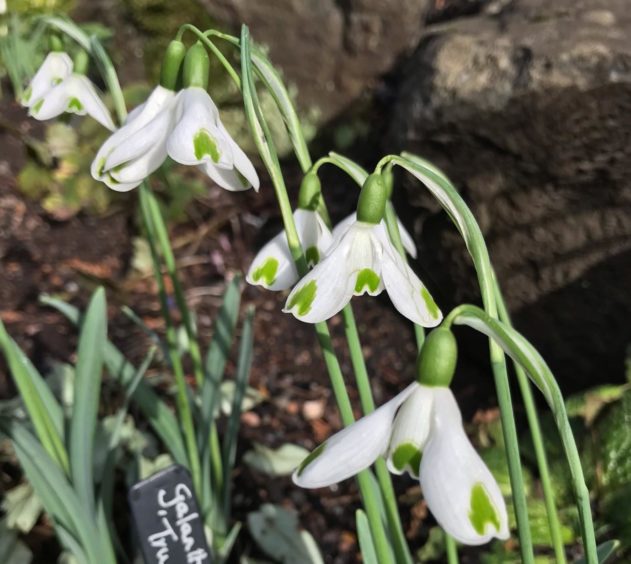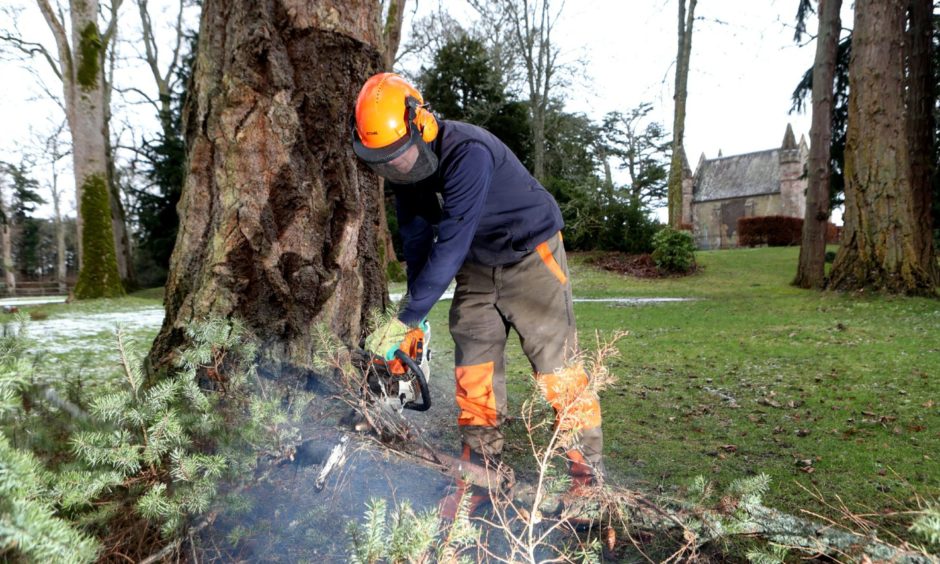I usually have a joke with the caretaker at Scone Palace where I work as head gardener, that the first month when we come back after the Christmas break we’re both quite relaxed, getting on with our respective winter jobs lists without any of the other added pressures that come when working at a major tourist attraction.
We both have deadlines to get everything done by, which is usually the Easter weekend when we open for the season and although we’ve made good progress, when February comes we’re starting to think “ok we’ve got plenty time but jings there’s still loads to do!”.
We haven’t reached the heid-less chicken phase where we’re running around trying to get everything done, that usually comes sometime in March when the countdown clock is clicking loudly.
A few weeks earlier than normal this year I feel I’ve reached that March stage already.
I know this winter the weeks of snow and cold temperatures has been just what the garden needs but it hasn’t helped me progress with many of the garden jobs I was looking to get done.
The thing with nature is it doesn’t stop for anyone and if we turn our backs on it for one minute we’ll soon know about it. Remember the good old days we used to get away for a fortnights holiday?
The grass didn’t take a break and on return would take twice as long to get it back how we like it.
Without regular trimming hedges soon go wild, just take a look at some of the hairstyles going around at the moment and you’ll see what I mean and if we don’t keep up with watering our potted plants, they wont last long shrivelling and dying with drought.
So when this winter weather finally clears, myself and the gardens team at Scone Palace are going to be faced with the challenge of completing both winter shrub pruning and tidying up the foliage of herbaceous plants right on the line when our plants are about to burst into life again.
Every spring I still manage to get caught out with this and I cant deny there has been many a time I’ve been trying to cut back the foliage on the likes of Catmint or the grassy like Siberian Iris foliage whilst trying not to damage the new shoots of growth that are already a few centimetres long.
As footery as that is I still want to make sure I get all the jobs involving cutting into woody growth completed by the end of February, at the latest. Shrubs aside where the timing of pruning work depends on the plant, worked carried out on trees is best carried out within one of two windows.
One is early summer after the tree has reached the peak of it’s growth before retrenching as it stores up energy as it goes through it’s winter cycle. The other is now.
Just now while in the dark months of winter our trees are having a well earned rest which is the perfect time for carrying out any works.
For us at Scone Palace with a large collection of trees many a few hundred years old this could mean some significant crown reduction or removal of branches to help prolong their lives and keep them safe for us all to enjoy and appreciate.
In my own garden where the trees are only a fraction of the size I’ll be looking out for any crossing branches that may rub against each other creating weak spots that could eventually fail.
I’ll also be checking out lower branches potentially removing to allow more light down to the bed below or just to allow me to pass under them without banging my head!
A wee tip here, in these cases you don’t necessarily have to go to the extremes of removing a whole branch, sometime just a nibble is enough to take some of that extra weight off which will lift the branch up.
Come the end of winter into the beginning of spring our trees and shrubs come back to life where energy stored in the plants roots initiate the flow of sap into producing leaves and new shoot growth. Pruning then may not see cuts heal and the plant will bleed.
This year I’m really wanting to up my game and not waste a thing from the garden and with woody material like this, I like to put through a chipper where it will be processed into smaller wood chips. These are really useful for making paths in your garden or top dressing existing.
The wood chips can also be mixed into your compost heap to help improve it’s drainage qualities or used as a mulch around some of your favourite plants, helping to suppress weeds and protect soil.
Be careful using fresh wood chippings where there is a risk they can extract essential plant nutrients from the soil as they decompose, ideally setting aside in a corner of your garden for a good 6 months to ‘mature’ first.
Personally I really don’t like the look of dried out chips sitting on the surface of my beds preferring the look of a lovely, crumbly dark looking compost that I can get the hoe through during the growing season.















